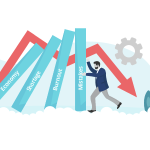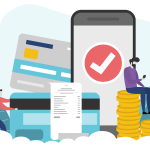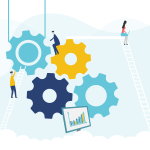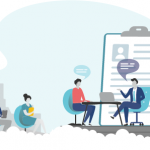The Impact of AI on Engineering: Best Practices for Risk Management
August 8, 2024
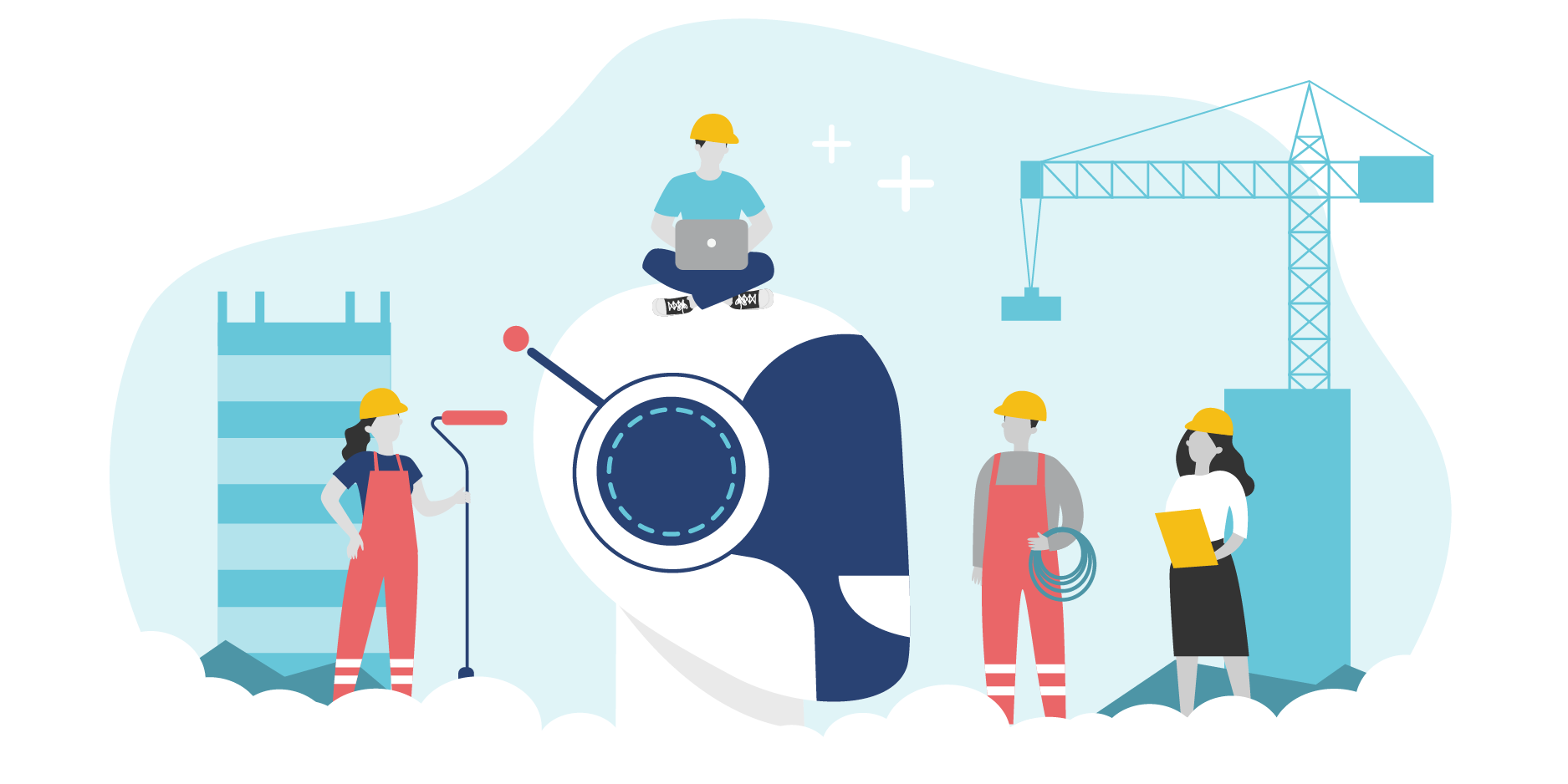
Artificial intelligence (AI) has rapidly evolved from a once-futuristic concept to an integral part of our everyday lives. With the rise of easily accessible generative AI tools incorporated into simulations and computer-aided design (CAD) programs, it’s no surprise that artificial intelligence is impacting essentially every profession—and engineers and designers are no exception.

Embracing AI-driven innovation can help eliminate time spent on mundane tasks and empower engineers to tackle complex problems more efficiently and effectively, thus driving progress in the industry. It will also allow firms to take the collective knowledge in the heads of their past, current and future employees and put it into a large language model for everyone to access and leverage. For the first time, firms will be able to demonstrate and quantify the value of their collective experience to clients.
But despite the apparent advantages, the legal implications of the AI arms race shouldn’t be overlooked. What are the dangers of relying on AI too much? And how can you harness its power while mitigating any potential liabilities? Keep reading to learn more about the specific risks facing engineering firms and how you can protect yourself.
Disclaimer: Please note the information provided herein offers guidelines only and is presented from a liability-based perspective to help you avoid insurance claims. It is not exhaustive and should not take the place of legal advice, nor will it apply to all businesses, settings, and circumstances. For specialized guidance, please consult a risk management professional, lawyer, or a licensed insurance representative.
What are the risks?
1. Negligence
Even the most advanced AI algorithms have the potential to provide poor information—whether it’s working based on outdated information on regulations and guidelines, or even unintentional biases present in training data.
Let’s say your firm employs generative design tools in the process of designing a commercial building. What if the design was generated with only the building code in mind, overlooking practical factors such as the actual end use of the building? What if the AI model was working off of older regulation protocols or made one wrong calculation along the way? A program can’t understand the nuances of why certain design aspects could be seen as a potential hazard down the line.
The reality is that much of the design work done bears strong similarities to work that you or your firm may have done in the past. However, engineers need to remember that humans will ultimately be held accountable for the safety considerations that may arise from using incorrect data processing and analysis generated by AI. Ethical concerns that arise as a result of the use (or misuse) of AI technologies can harm the reputation of your firm and damage the trust of your stakeholders. When it comes to issues of regulatory compliance and public safety, it’s better to be safe than sorry—and no matter how sophisticated the AI tools may be, human oversight remains crucial.
RELATED: Why Engineers Might Get Sued and What You Can Do About It
2. Skill Gaps
The automation of repetitive and mundane tasks will undoubtedly influence the skillsets needed for engineering roles moving forward. AI-aided streamlined workflows will create a need for the upskilling and reskilling of engineers, potentially displacing jobs and disrupting the engineering job market as a whole.
A significant skills gap can lead to frustration among employees who feel ill-equipped to handle new technologies, which can result in higher turnover rates, decreased morale, and lower productivity. As a result of incorporating AI, priorities will shift from routine task execution to higher-level problem-solving, project management, creativity, and innovation, with soft skills like collaboration, communication, and leadership becoming even more valuable.
Engineers will increasingly be required to have a blend of traditional technical skills as well as knowledge of how to effectively manage and interact with AI systems. Firms that lack AI expertise will become increasingly inefficient, less cost-competitive and struggle to keep up with competitors.
3. Cyber
The use of AI technologies lends itself to several cyber risks, especially when it comes to data security and privacy. Any software, whether it involves AI or not, can have vulnerabilities that could be exploited by cyber attackers—which can result in unauthorized access and data breaches. The exposure of confidential data in this way could lead to financial losses, reputational damage, and legal liabilities, and relying on third-part AI services and cloud platforms could heighten your exposures.
AI is “continuously consuming information from users,” including potentially sensitive information. This creates more questions surrounding privacy and confidentiality. Consider this example: your company uses an AI-powered tool that transcribes and summarizes meeting notes. But if the model begins using data for other purposes without user consent or records data outside of meeting hours, that could cause problems for your company. Unless you’ve tested rigorously, you risk unauthorized access or misuse of sensitive data.
4. Intellectual Property
In the engineering field, designers often navigate complex intellectual property (IP) landscapes, dictated by contracts that specify the ownership and use of the IP created. Additionally, designers often work collaboratively in teams, which further complicates the management of IP.
If designs are being fed into AI models to leverage existing knowledge—that runs the risk of an engineer unintentionally infringing upon the IP rights of a client or another partner, since the AI may reuse this data without the proper authorization. Though reusing an idea is not a problem, reusing an actual design might require the designer to seek permission or pay royalties to another party. In the early stages of AI adoption, tools might not have the capability to manage IP risks effectively, thus necessitating vigilance from users to ensure compliance with IP regulations.
PRO Tips: What can you do?
The onset of AI technology could revolutionize the day-to-day role of engineers. But new opportunities always come with new risks that require careful oversight. You need to be cautious about the way you incorporate AI, otherwise, you could put your business on the line. And your insurance coverage might not always be there to protect you in the event of a lawsuit.
Why? Involving AI technologies in your professional services could be considered a material change in your operations and your risk profile, especially if you’re using it for client-facing activities. From an insurance standpoint, the uncertainties associated with AI means that insurance providers might see your firm as higher risk. That could lead to premium increases, limited coverage, or even denied claims if you haven’t informed your insurer about your use of AI. In the short term, AI usage may increase your exposure to lawsuits if not properly implemented, and leave you without the protection you need when it counts.
In the complex and dynamic field of engineering, it’s critical to cover all your bases. With ever-evolving technologies and compliance requirements to worry about, what meets your business needs today might not suffice tomorrow. That’s why it’s essential to be proactive and establish a solid risk management strategy to identify, manage, and offload threats. Here are our top tips to integrate AI technologies into your operations and position your firm for success!
1. Look before you leap.
Whether your firm is just starting to experiment with using AI technologies or you’re already deeply immersed, do your due diligence. Be sure to:
- Define your engagement level. Determine how extensively you want to leverage AI and set specific goals and objectives.
- Engage all relevant parties in your organization, including your internal design team or any contractors you employ, to identify risks and develop strategic action plans for responsible AI development, deployment, and usage.
- Before adopting any third-party AI tools, carefully test the processes and investigate the provider’s expertise, reputation, and track record.
- Consult an expert when additional guidance is needed, particularly for any legal concerns related to AI implementation.
- Stay up-to-date on new trends, tools, and best practices within the engineering industry. This will enable you to adapt your AI strategy and mitigate risks accordingly.
Once your risks have been identified, you can then develop tailored strategies to manage and contain them.
RELATED: D&O Insurance: Sail Through Troubled Waters With Confidence
2. Document everything well.
By implementing comprehensive documentation practices, engineering firms can boost transparency and accountability, minimizing many of the risks associated with the use of AI systems. Proper documentation helps to ensure compliance with industry standards and regulatory requirements, as well as minimizing downtime when identifying and fixing any issues that may arise. Engineering firms should:
- Keep robust records of calculations, code, algorithms, and system architectures created with the aid of AI in any capacity.
- Monitor AI outputs, cross-check important information, and be prepared to intervene if an AI system produces questionable or unsafe recommendations.
- Employ strong data security measures and efficient debugging and maintenance processes to ensure the protection of your intellectual property and support the long-term reliability of AI-supported systems.
3. Train your staff.
Continuous learning and adaptation are necessary to keep up with the ongoing advancement of technology and harness the full potential of AI in engineering. It’s crucial for firms to:
- Encourage and facilitate learning and development opportunities for the skills necessary to use AI tools and supervise AI work.
- Invest in retraining and upskilling programs for employees to prepare them for new roles in an AI-augmented workplace.
- Establish ethical guidelines for AI development and use, and engage in regular ethical reviews of projects completed with the use of AI.
- Integrate ethics and regulatory training into engineering education and ongoing professional development.
- Promote a culture of continuous learning to keep pace with rapid AI advancements in the engineering field.
RELATED: All Aboard: Onboarding Risk Management for Engineers
4. Implement quality control procedures.
As an engineer, you’re well aware that even a single mistake could have massive consequences. That’s why implementing best practices for the review of work is integral for any engineering firm—and it becomes even more essential after incorporating AI into the process. You might already have some in place, but here are our top guidelines to boost AI quality control and minimize errors:
- Ensure that all AI-assisted outputs are independently reviewed and verified by at least two or more qualified engineers. Keep in mind that AI cannot and should not replace human judgment.
- Develop and document quality control protocols, including steps for data validation, output accuracy, and model verification—and regularly update them to incorporate new insights and technological advancements.
- Conduct regular audits of AI systems and their outputs to verify compliance with quality standards.
- Promote an iterative approach to development, continuing to refine outputs and checking/rechecking your work.
- Maintain transparent communication within your team to share best practices and encourage open discussion of AI-related challenges, limitations, and risks.
RELATED: 3 Common Engineering Mistakes—and How You Can Avoid Them
5. Review your insurance.
Insurance may not be top of mind when it comes to the AI implementation process, but it’s crucial to the well-being of your business. Even a groundless claim can require hours of costly litigation—valuable resources that could be better spent on growing your firm. In addition to costs, lawsuits can also destroy your reputation, deterring potential clients.
With the right protection in your back pocket, you’ll be able to protect the financial well-being and reputation of your company in the case of legal action. But make sure to maintain transparency with your insurance provider. However you choose to incorporate AI, keep your insurer in the loop every step of the way. This will help you ensure coverage for any AI-related risks and identify limitations ahead of time.
Plus, your insurance broker can also advise you on any additional coverages to offer greater protection for any new risks that crop up, and allow you to start your AI journey with confidence.
6. Work with a broker that understands the unique needs of the engineering space.
Each firm will experience the impact of AI differently, and the right risk management strategy for your needs will depend on a variety of factors—including your engineering specialty, operations, and the specific systems you’re working with.
That’s why it’s critical to work with a risk advisor that specializes in the engineering & design sector. With over 40 years of experience, a licensed broker like PROLINK can help you navigate the changing AI landscape and become resilient in the face of change. Our dedicated advisors will:
- Keep you informed about emerging threats, legislation, and innovations that could affect you and share what steps other firms in your industry are taking;
- Provide you with comprehensive insurance and risk management solutions that align with your business goals and budget;
- Regularly reassess your exposures and readjust your strategy to scale with your leadership, people, and processes.
AI is transforming the engineering landscape by enhancing design workflows, increasing efficiency, creating more space for creativity, and allowing firms to truly leverage the collective knowledge and experience of the entire firm. It’s here to stay, regardless of how you feel about it—but by understanding your risks with a dedicated partner by your side every step of the way, you can operate with confidence and stay ahead, no matter what new developments come your way. You can work to control your exposures—and your costs—long-term. You can focus on what’s most important: your business.
To learn more, connect with PROLINK today!
PROLINK’s blog posts are general in nature. They do not take into account your personal objectives or financial situation and are not a substitute for professional advice. The specific terms of your policy will always apply. We bear no responsibility for the accuracy, legality, or timeliness of any external content.
